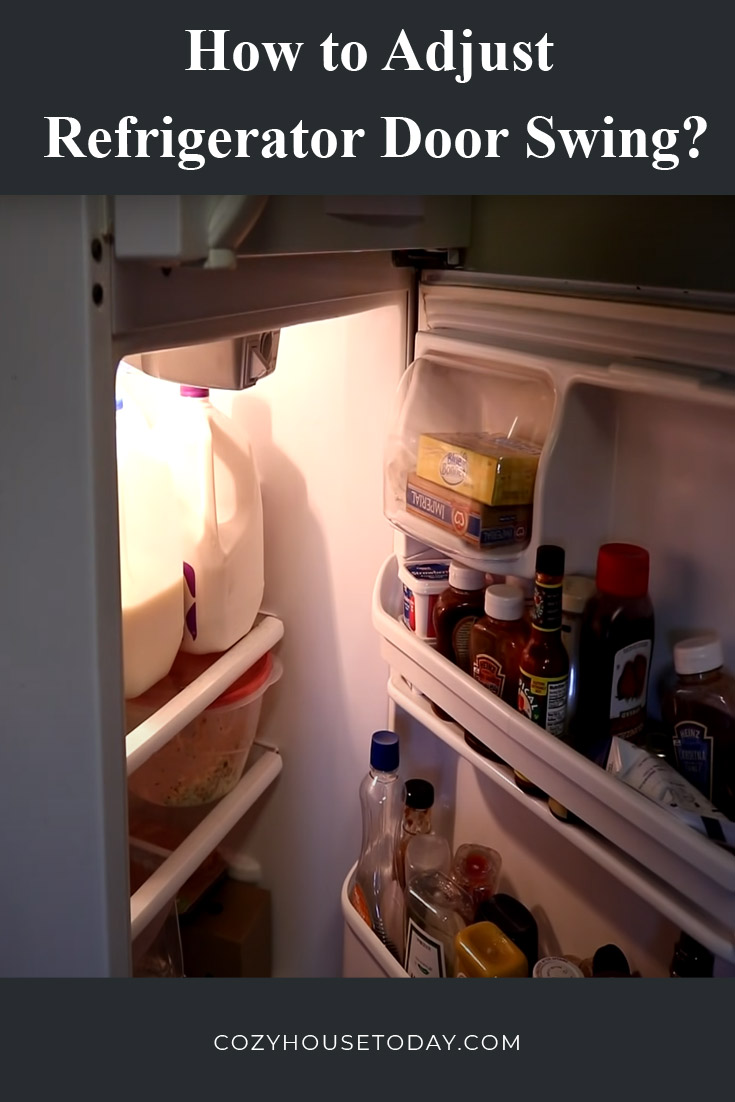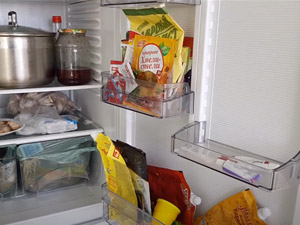
How to Adjust refrigerator door swing? This is a question that many people ask themselves when they are trying to figure out how to fix their refrigerator. If you have ever had an issue with your refrigerator door not shutting properly, then this post is for you.
This is a difficult task for the average person who doesn’t know what they are doing. However, with our instructions, it can be done in less than an hour!
How to adjust refrigerator doors so they close properly?
There are several different refrigerator door swing types. Follow these troubleshooting steps to adjust refrigerator doors so they close properly:

- Pull the refrigerator out from the wall and place a level on top of it. Make sure that both refrigerator doors sit at an equal distance off of the ground. If one side is higher than another, open up the refrigerator compartment and see what’s going on inside. You will likely find a metal bar or piece leaning against that particular refrigerator door which should be removed to even out your appliance’s levels once more.
- Check for obstructions such as toys left behind by children or pet food bowls, etc., hiding near or under your refrigerator— anything blocking its proper swing could force you to perform some adjustments.
- The refrigerator door hinges should also be checked for any signs of rusting or corrosion. If there is, gently clean them with a little baking soda and warm water.
- Sometimes refrigerator doors will stop working if the refrigerator itself has been moved from its original location—make sure that your refrigerator’s front feet are firmly planted on the floor.
Adjustment a refrigerator door swing step by step
A refrigerator door that swings too wide can be a problem, particularly if the refrigerator is located in a tight kitchen.
If you are experiencing this issue with your refrigerator, just follow these steps.
Step 1 – clean the refrigerator gasket

Start by cleaning the refrigerator gasket. If it is dirty, this will prevent the refrigerator door from closing properly. A refrigerator gasket is a strip of rubber that hugs the door frame. It is used to create an air-tight seal so your refrigerator maintains its temperature, saving you money on electricity costs. You can clean it gently with warm water and dish soap or scrub off any caked-on food particles using baking soda mixed with hot water.
After cleaning, check for wear by sliding something thin between the refrigerator door and refrigerator body—if you can fit even one finger in there, then adjust accordingly as this means that the refrigerator’s gasket is worn out causing excessive swing space. If needed, purchase a new refrigerator gasket from your local appliance store before proceeding further down these steps.
Step 2 – reattach your gasket

Take the refrigerator door and reattach your refrigerator gasket. If you can’t find a refrigerator gasket, then cut a piece of rubber from an old shoe or another object that fits snugly into the door frame.
If there is any excess material after attaching it to the refrigerator door, simply trim away as needed with scissors—you want to have just enough so that when closed, this extra bit presses hard against itself creating a tight seal without having too much where it could interfere with how well the refrigerator doors close together tightly as well.
To test out if everything has been done correctly at this point: Open up both refrigerator doors and press them shut until they meet resistance. The pressure should be equalized on both refrigerator doors.
If this is not the case, go back to your gasket and double-check that it has been attached properly—pull on each corner of the refrigerator door’s rubber strip to be sure that they are pressed hard against one another when closed tightly. If necessary, adjust until you get good pressure in equal force across both refrigerator doors when shut tight.
Step 3 – balance the refrigerator feet
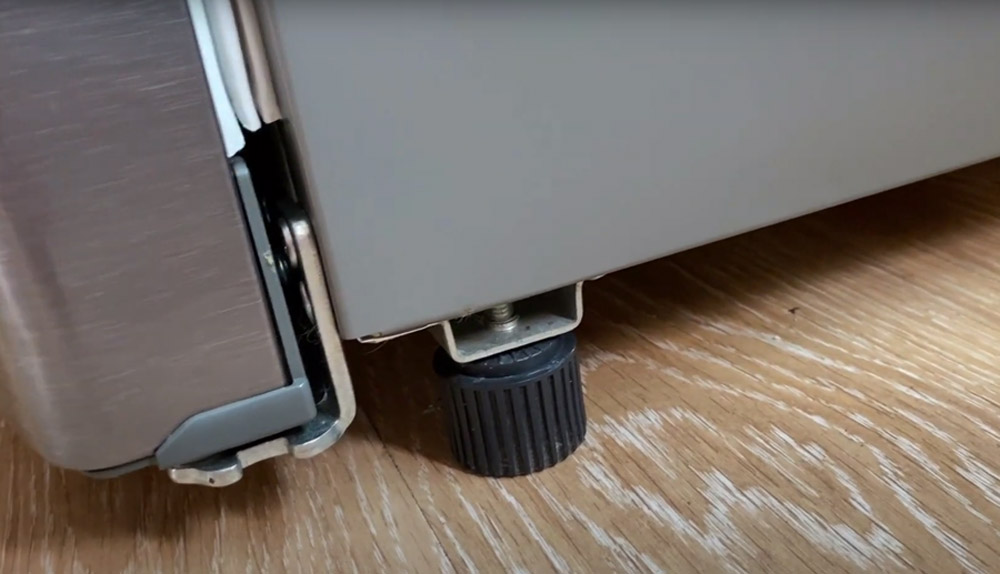
If refrigerator feet are not balanced, the refrigerator will tend to pull itself forward rather than straight. When refrigerator doors are open, the refrigerator will move forward when the front feet touch the ground.
To balance refrigerator feet:
- look for screws or other fasteners that may be holding down refrigerator legs in place. Remove them by turning counterclockwise to release the refrigerator leg from the floor plate. Don’t forget to put back all screws properly after balancing the refrigerator foot! Otherwise, it could cause injury if someone steps on a loose screw while barefoot.
- After removing the refrigerator’s front leg(s), use something like an Allen wrench (or even just a quarter) and insert it into one of the four holes located at each corner of your refrigerator’s base plates where its metal stand meets up with both rubber shims/feet—you should find a little metal bar there to insert your quarter into.
- If refrigerator feet are not positioned evenly, then you can adjust the refrigerator’s front legs until they balance one another out by simply turning the small screw found at each corner of the refrigerator’s rubber shims to raise/lower refrigerator stand as needed—turning clockwise will lift the foot while counterclockwise lowers it down again.
Step 4 – tighten the refrigerator hinges
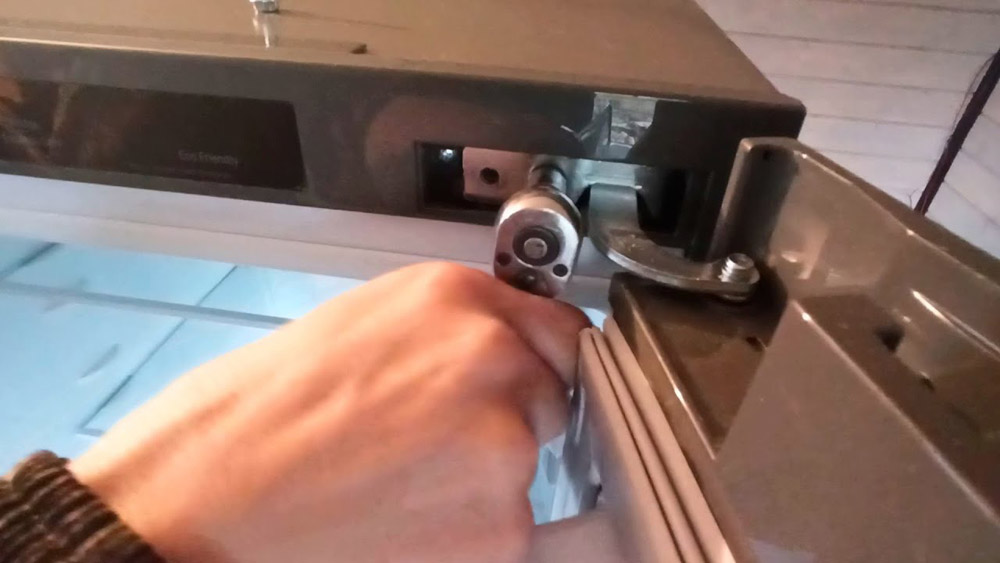
If refrigerator doors feel loose and out of alignment then tighten them by turning the refrigerator door hinge screws counterclockwise one or two turns at a time until refrigerator hinges pull together tightly again.
You may need to turn refrigerator door screw(s) clockwise if you had turned it/them too far as partway through trying to re-tighten your refrigerator’s hinges (or else simply make sure all four sets of bolts are tightened equally).
After tightening both refrigerator hinges, close each fridge door again and push on them firmly from top-down to test for any more excessive swing room between their respective closed positions.
Step 5 – replace the damaged hinges (when necessary)
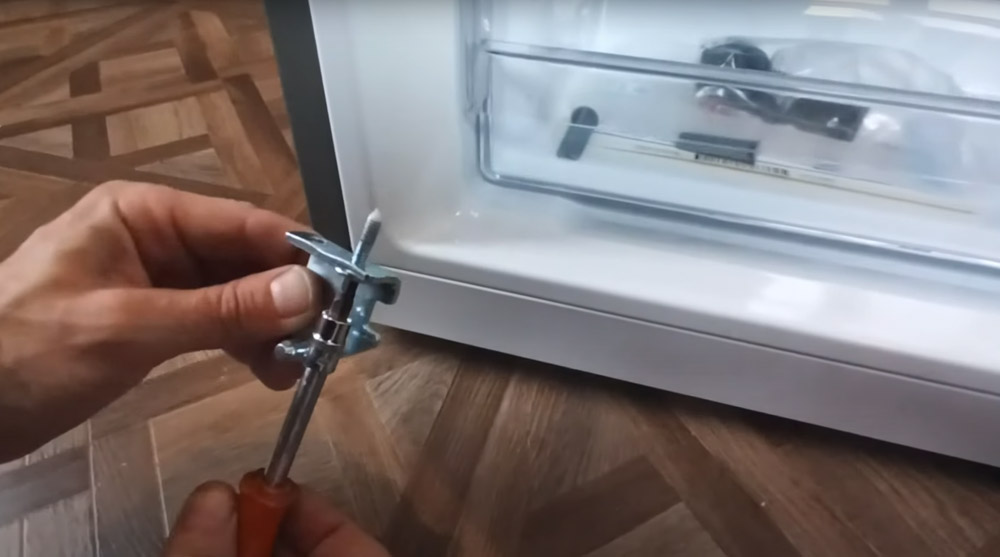
If refrigerator doors don’t close properly and/or swing too widely open when closed, refrigerator door hinges may be bent or rusted out.
You can buy refrigerator door hinges at your local appliance store.
Step 6 – rearrange your refrigerator shelves
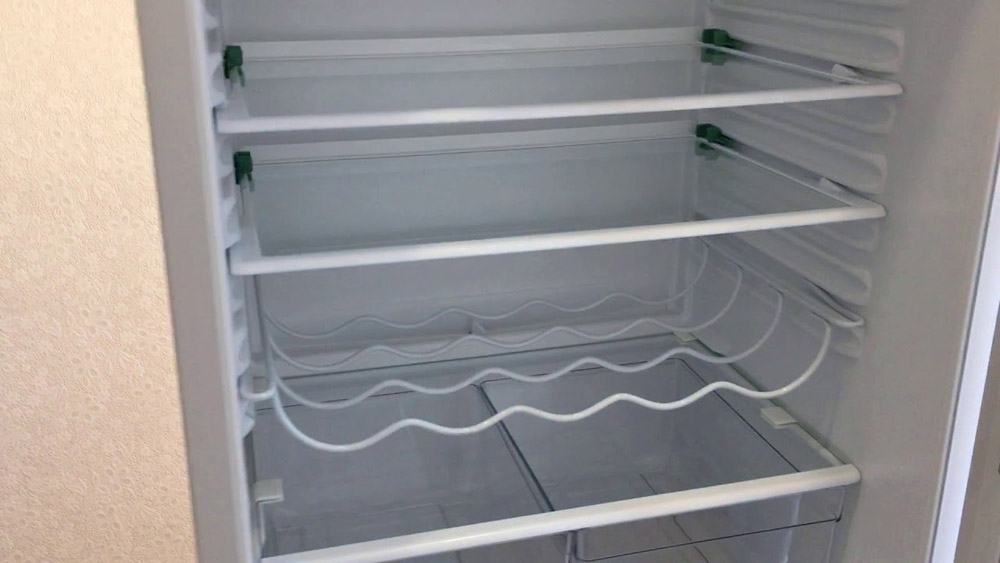
If refrigerator shelves are not properly aligned then refrigerator doors will be difficult to open and close without heavy slamming or excessive force.
To fix misaligned refrigerator shelf(s), first, remove them by taking out all items stored on the shelf one at a time to better access behind it for removal—after which you can place your hand up against your refrigerator’s interior wall where the refrigerator’s shelves are mounted to feel whether they have been attached securely enough into position. If any of your fridge’s shelves appear loose, tighten their corresponding plastic screws with an allen wrench (or quarter) until they firmly hold that refrigerator shelf back into its proper spot again. Make sure there isn’t too much excess space between objects being kept.
Step 7 – replace the door (when necessary)
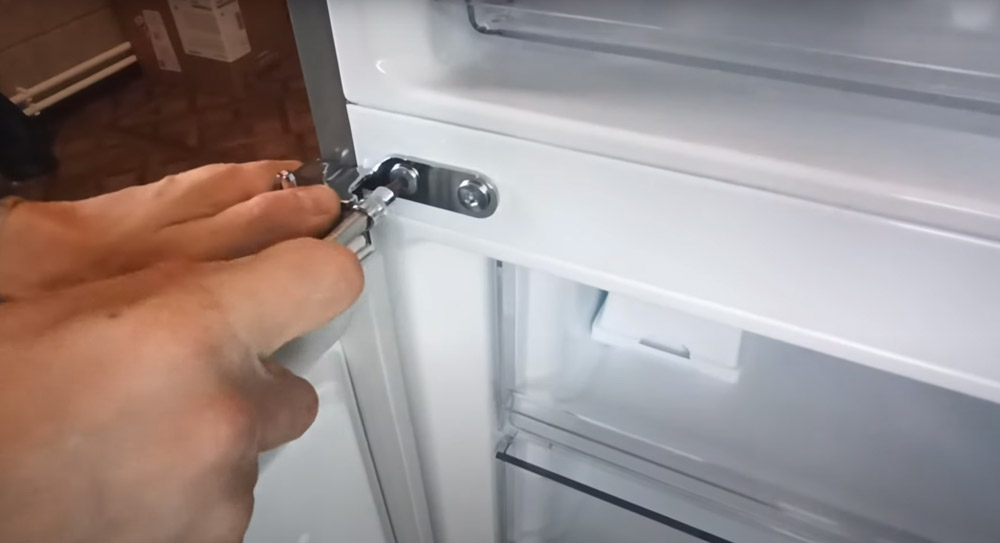
You might need to replace the refrigerator’s entire front door with new ones for the refrigerator door(s) to function correctly and shut properly again!
Inspect refrigerator exterior carefully for any signs of damage on its inside refrigerator door hinges—if found defective, remove refrigerator’s front door by taking out all items stored in the freezer compartment first to better access behind it for removal.
After removing the refrigerator’s interior refrigerator doors, place them side-by-side upon a flat surface and check both refrigerator doors hinges (along with their spring(s)) for extensive wear or bending if either hinge appears bent/warped even slightly – this usually means replacing the refrigerator’s entire set of refrigerators door!
Upright refrigerator and freezer swing door tension adjustment
Compare to freezers, refrigerator swings tend to be easier and quicker to adjust since there is not much weight involved in comparison with the size of the appliance itself.
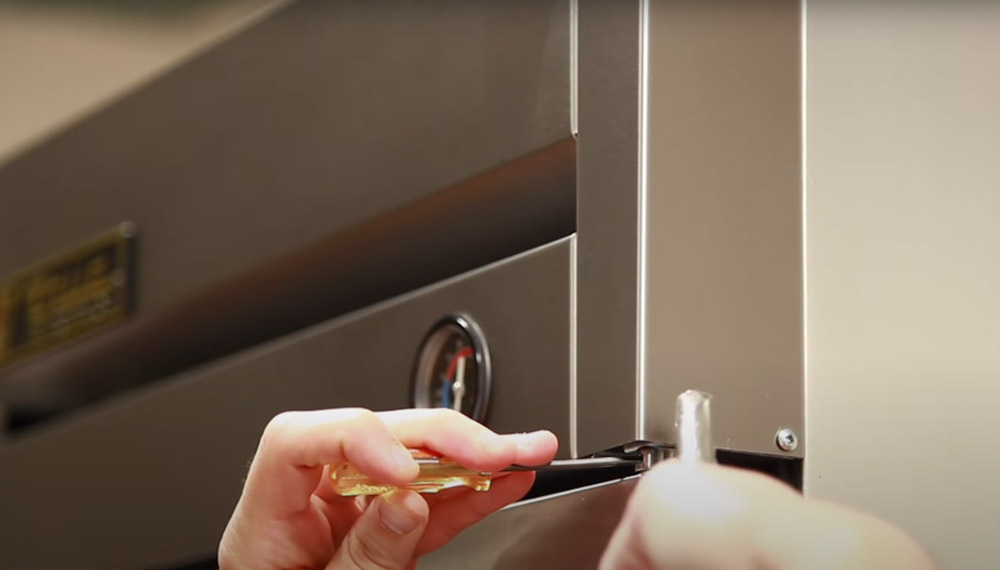
Upright refrigerator swings are often adjusted by manually turning the screws at either end of the refrigerator hinges which serve as tension setting mechanisms. This can be done on some models with a screwdriver or even your own hands but may require additional tools for others depending upon design specifications and how accessible these areas are within each particular appliance type.
Freezer swing door adjustments also work in this manner although many different types exist given freezer hinge designs vary significantly from refrigerator versions if present at all on certain freezers.
Refer to your owner’s manual for specific instructions on how you can access this area within your model type. If no available resource exists, contact customer service or technicians directly should be able through their phone number provided on warranty documentation or website information source if easily accessible online or physically located near you at a store location.
Conclusion
Small refrigerator doors tend to open from the middle. In this case, you need to place a small refrigerator door swing adjustment kit on either side of your refrigerator’s hinge. You can also purchase a universal appliance door opener that attaches to any brand or type of refrigerator and adjusts for both left-swinging and right-swinging models.
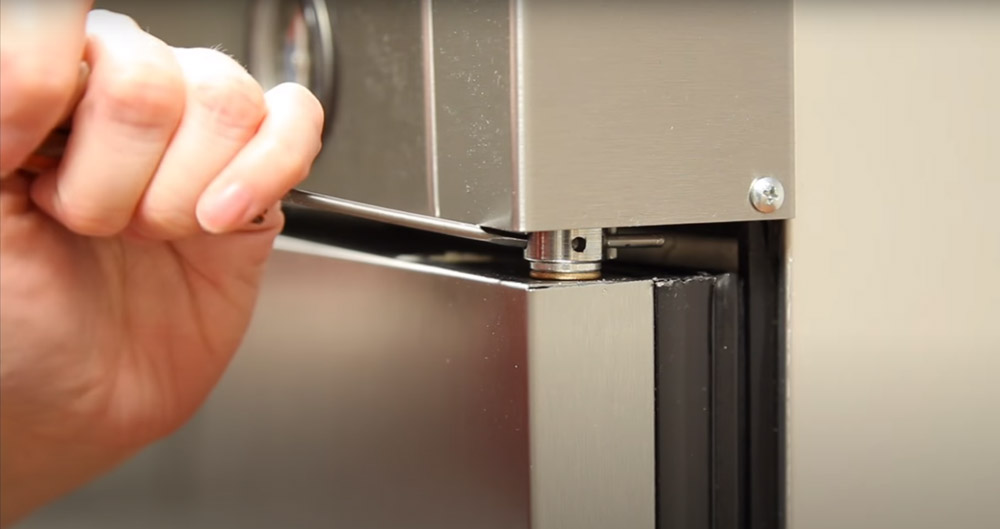
Large refrigerators with double doors often have hinges placed in the center as well but these larger units generally require two separate kits (one for each “half” of the unit) because they are usually not exactly centered under one another when installed against opposite walls. If only one kit is used it will adjust itself automatically depending on which way it opens; however, if there is no room beside the refrigerator then it may not open far enough to reach the refrigerator door swing adjustment kit.
If you are unable to adjust your refrigerator’s door with these kits or it is already too tight then you can still use a universal appliance opener on its own, just be aware that this type of product will only work if there is sufficient room beside the refrigerator for it to remain open while it shuts itself automatically after about an hour.
Otherwise, you could end up smashing your fingers! You need at least six inches (15 cm) where space permits so furniture and appliances don’t block access when pulling out food items from inside the refrigerator.
If you need to change the refrigerator’s door swing direction (for example, because it is too tight) then use a hinge pin adjustment tool. It allows quick and easy changes without tools or disassembly of any kind.
You should only attempt this if necessary though; otherwise, you risk weakening your refrigerator by causing stress on parts that aren’t designed for regular manual alteration. If there are no hinges in line with each other when opened both ways then it cannot be adjusted properly so always try fixing things first before attempting something yourself!
